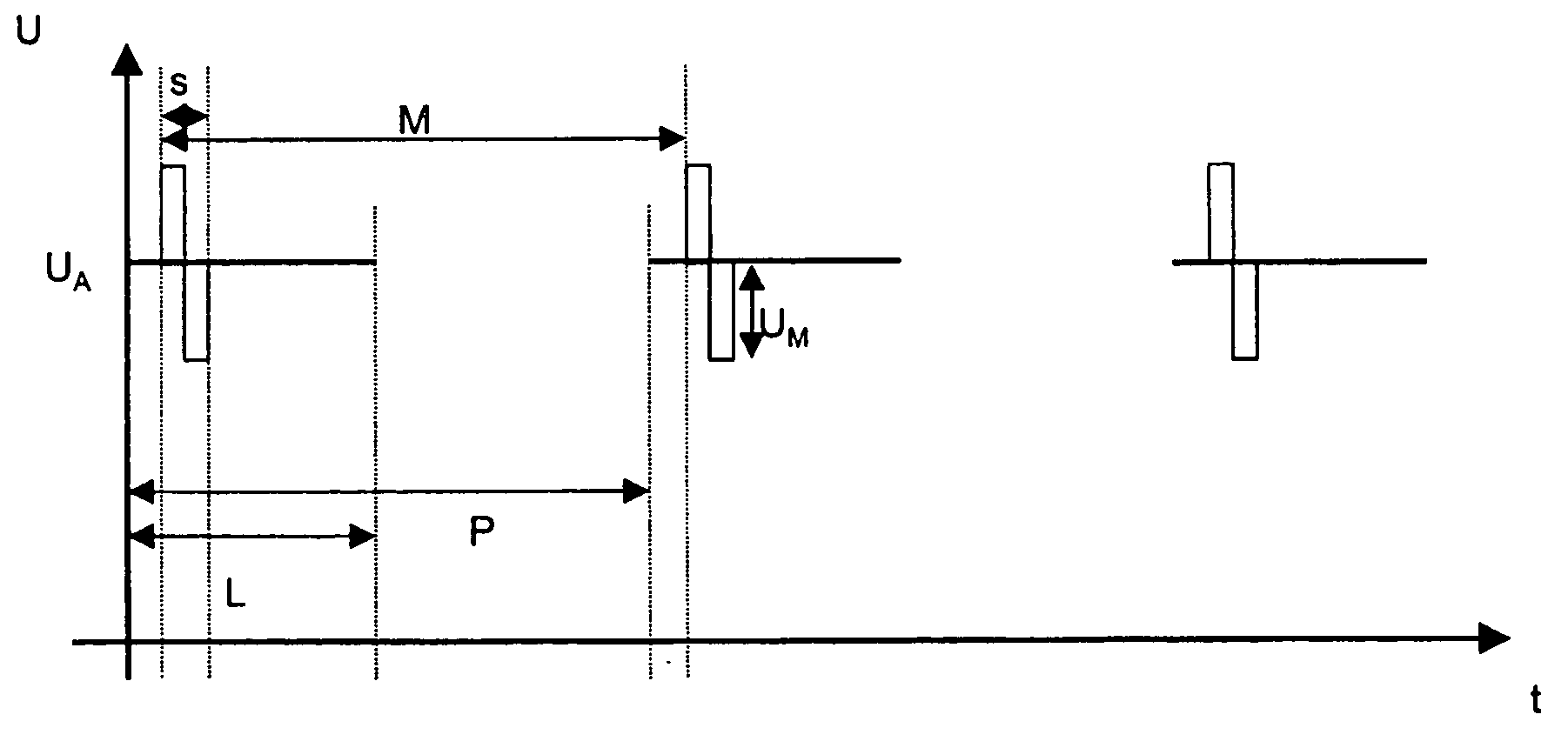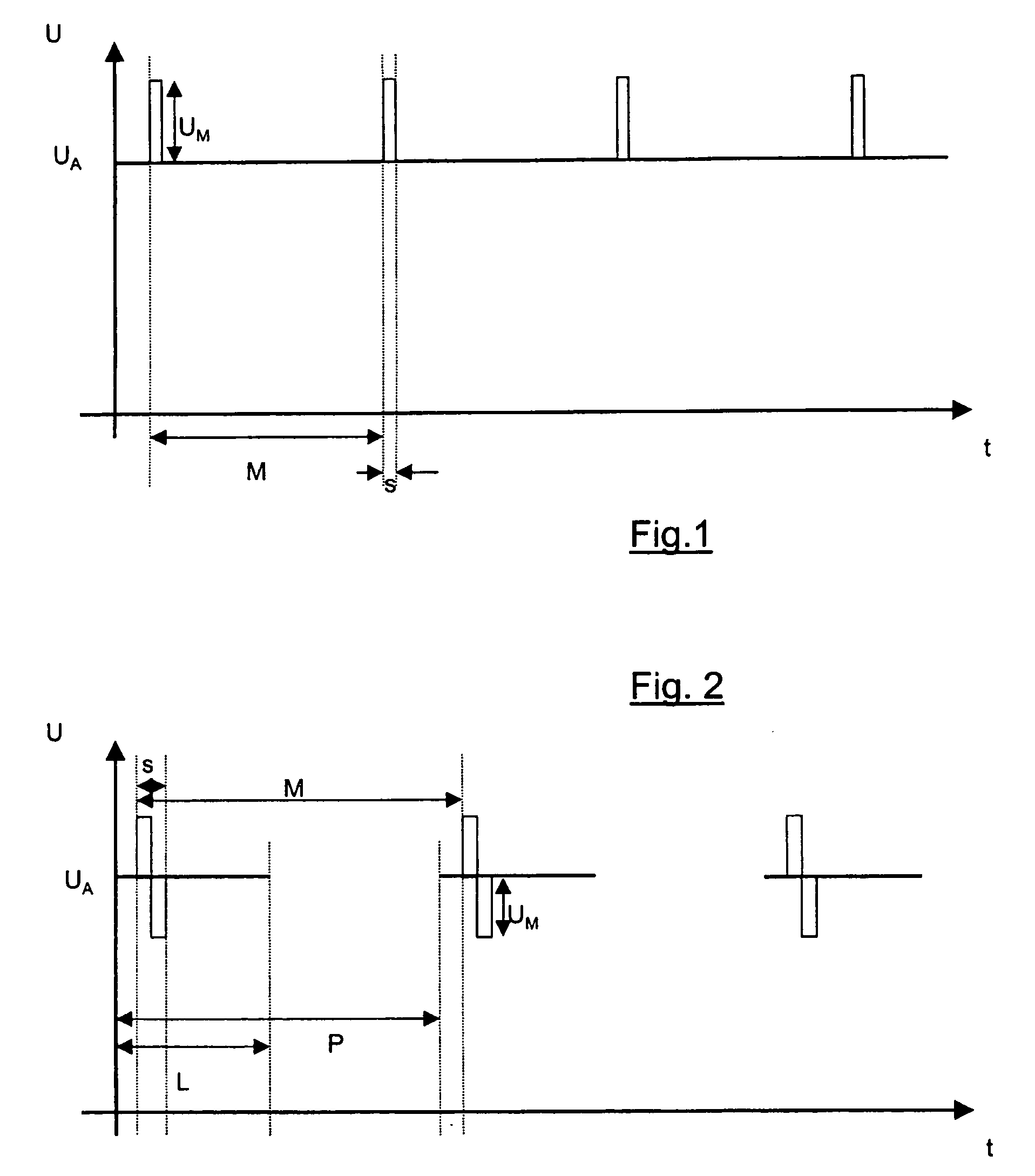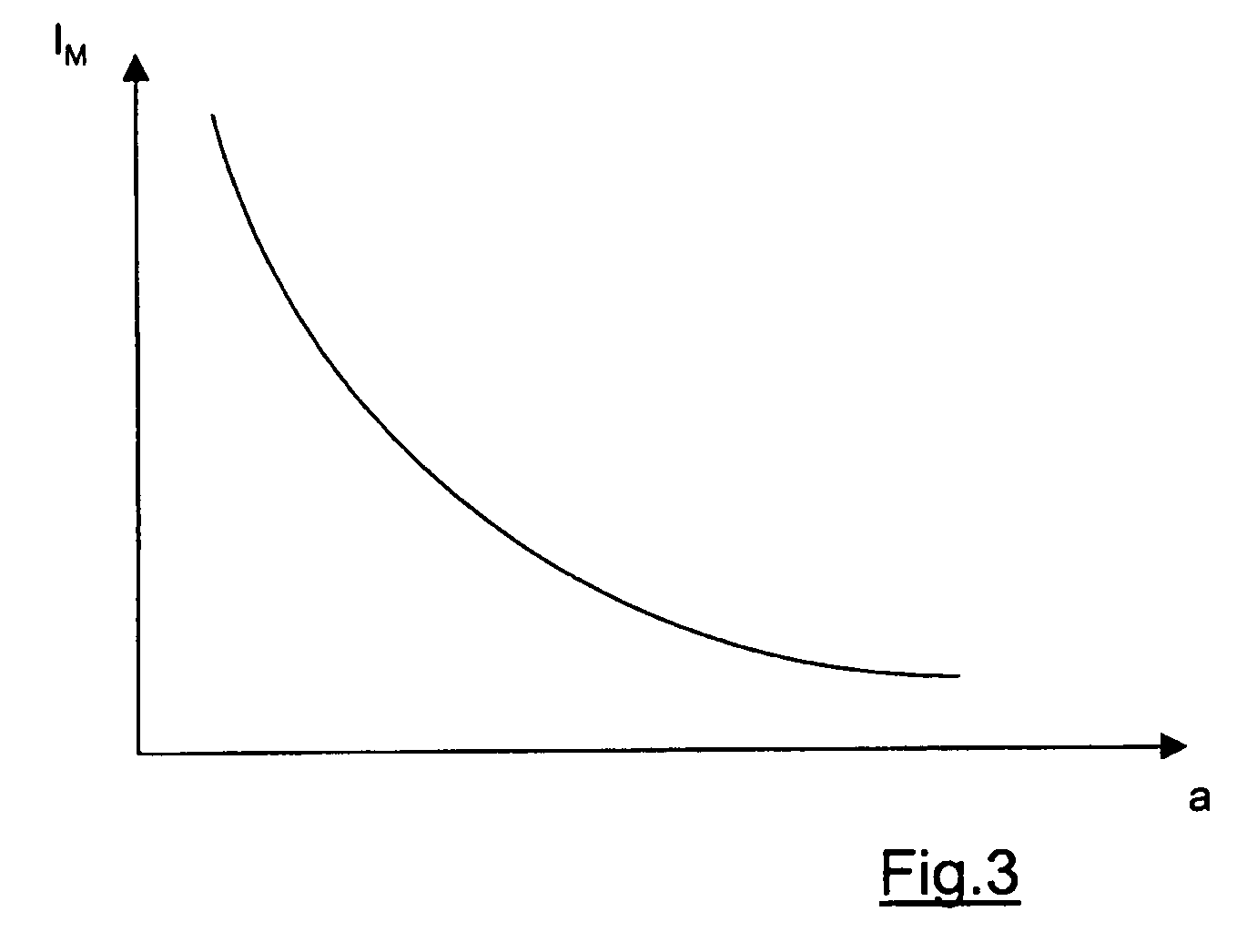Method for machining workpieces
a technology for workpieces and workpieces, applied in the direction of machining electric circuits, manufacturing tools, electric circuits, etc., can solve the problems of unusable surface damage on the workpiece and damage to the machining electrodes
- Summary
- Abstract
- Description
- Claims
- Application Information
AI Technical Summary
Benefits of technology
Problems solved by technology
Method used
Image
Examples
Embodiment Construction
[0020]FIGS. 1 and 2 each show the diagram of the voltage curve over time, which is provided when performing the method according to the present invention. In the method according to the present invention, the voltage is produced at the machining electrode and the current flow resulting because of the production of the voltage is measured. The operating current resulting from the operating voltage is first filtered out of the current signal in a computer device, so that this current signal only contains the current component which is caused by the measuring voltage. This may be performed using a high-pass filter or other appropriate device, for example. Alternatively, the voltage production device for the measuring voltage can be separate from the voltage production device for the operating voltage, so that the resulting measuring current is directly measurable in the area of the voltage production device for the measuring voltage.
[0021] In any event, a corresponding value for the d...
PUM
| Property | Measurement | Unit |
|---|---|---|
| operating voltage | aaaaa | aaaaa |
| voltage | aaaaa | aaaaa |
| distance | aaaaa | aaaaa |
Abstract
Description
Claims
Application Information
 Login to View More
Login to View More - R&D
- Intellectual Property
- Life Sciences
- Materials
- Tech Scout
- Unparalleled Data Quality
- Higher Quality Content
- 60% Fewer Hallucinations
Browse by: Latest US Patents, China's latest patents, Technical Efficacy Thesaurus, Application Domain, Technology Topic, Popular Technical Reports.
© 2025 PatSnap. All rights reserved.Legal|Privacy policy|Modern Slavery Act Transparency Statement|Sitemap|About US| Contact US: help@patsnap.com



